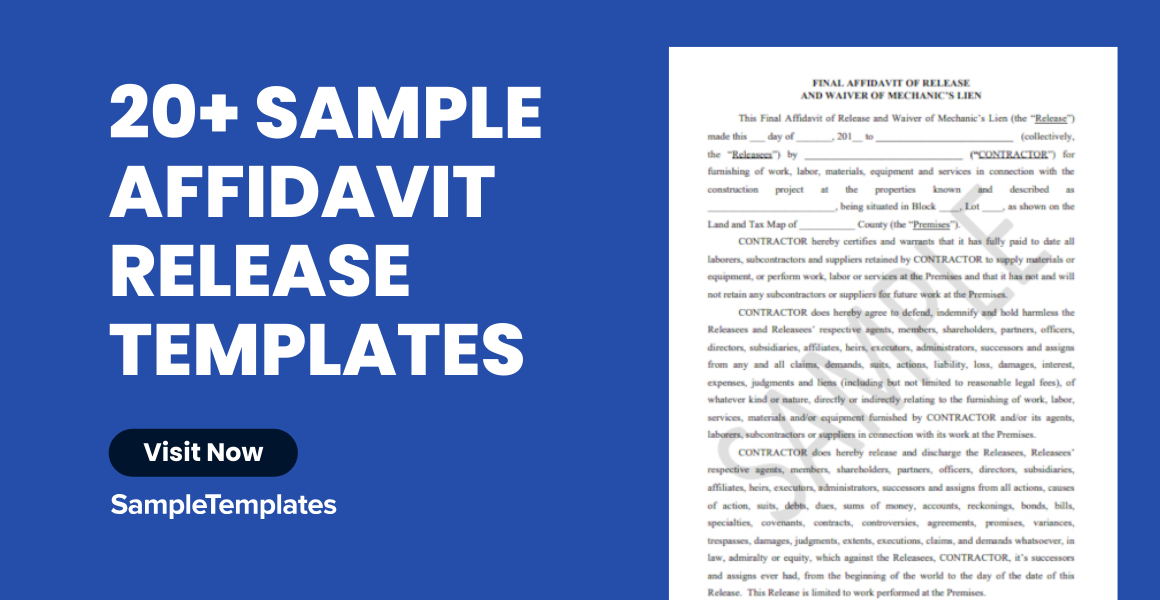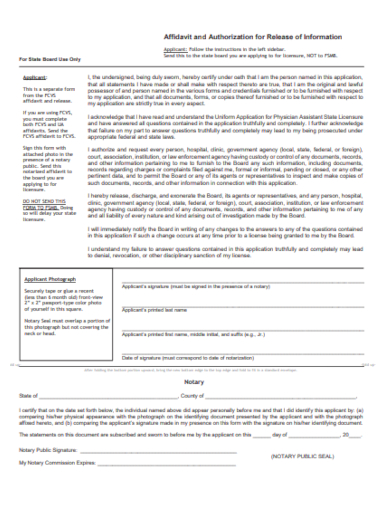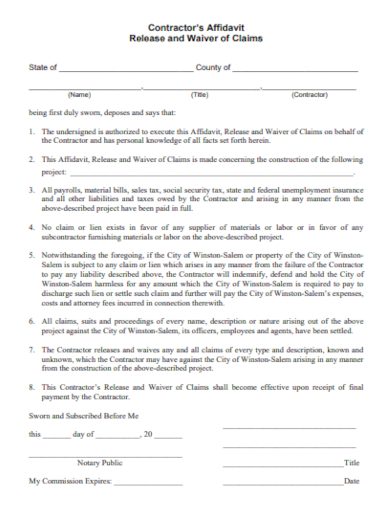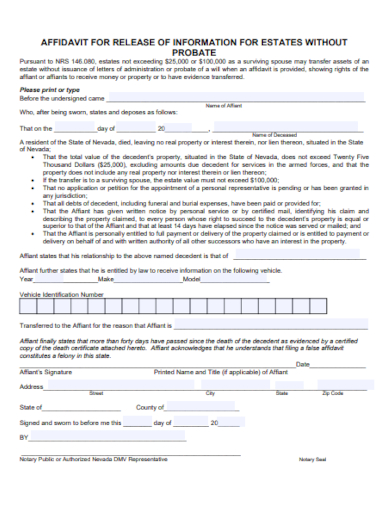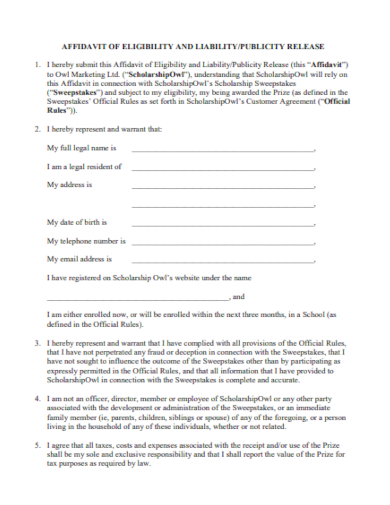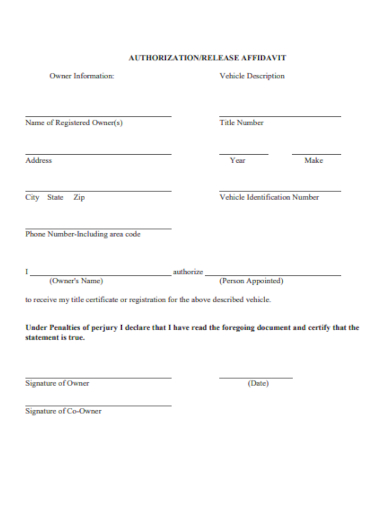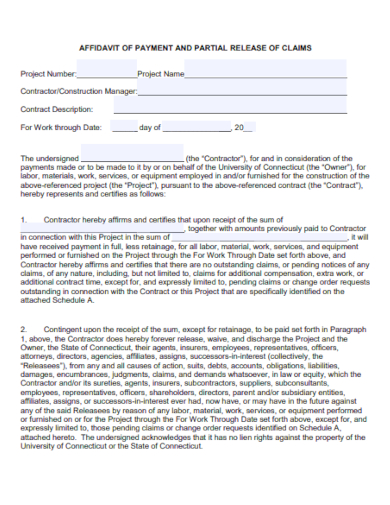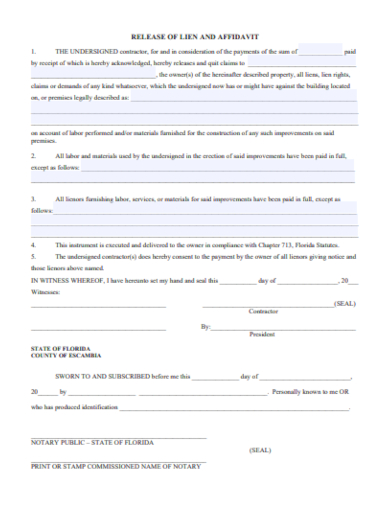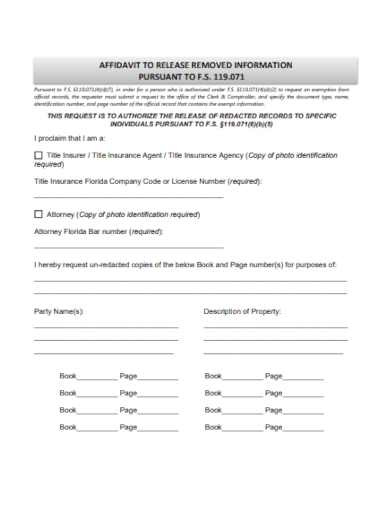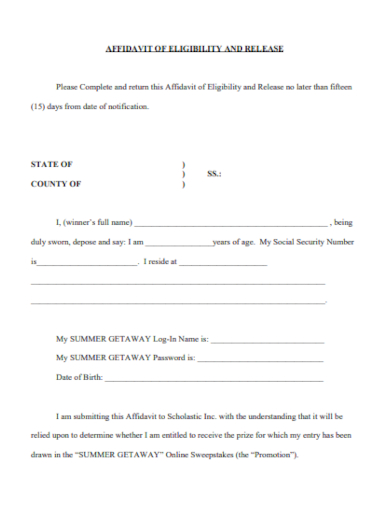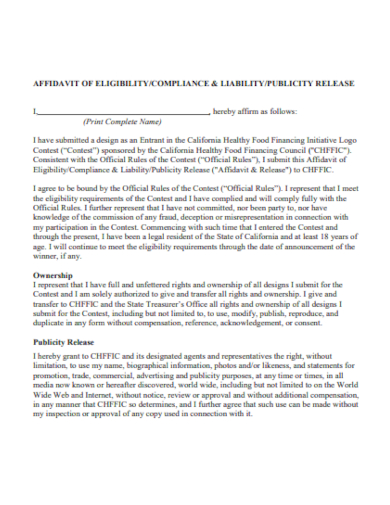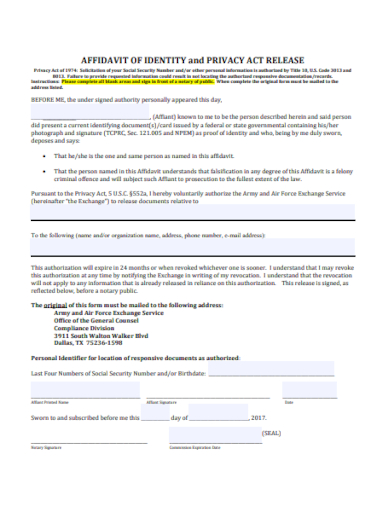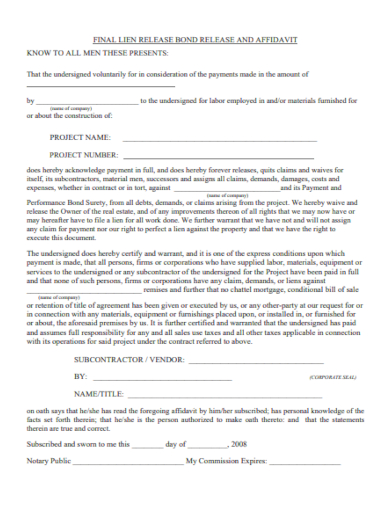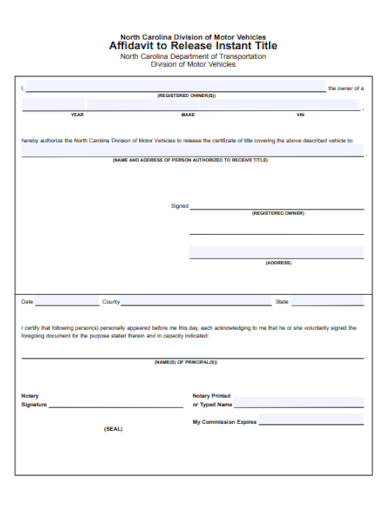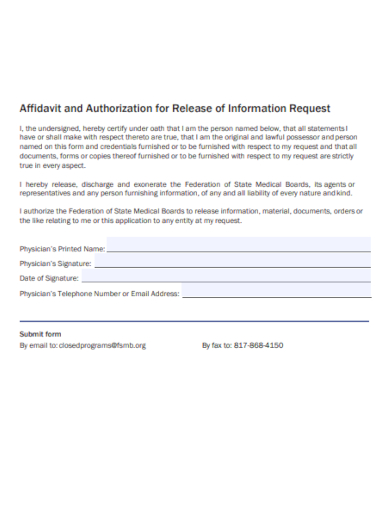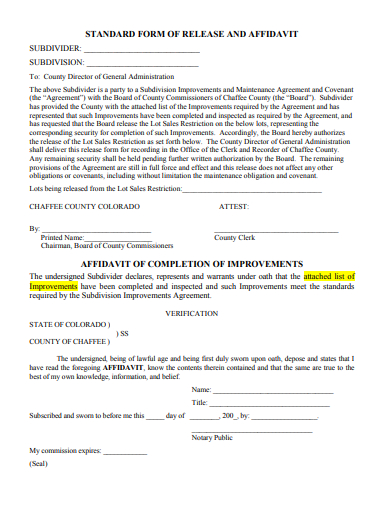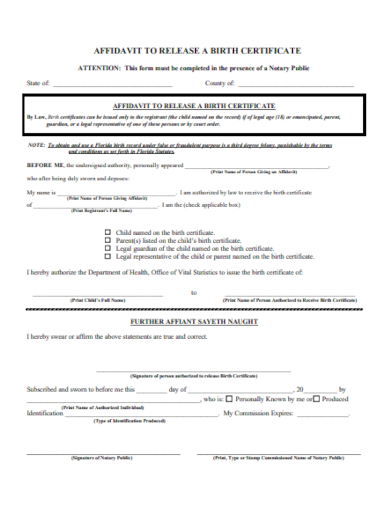Step confidently into the realm of legal documentation with our Sample Affidavit Release Template. In today’s intricate legal landscape, safeguarding both personal and business interests via a solid sample affidavit is a necessity. With an emphasis on precision and user-friendliness, our template caters to those seeking both depth and clarity. Arm yourself with this invaluable tool and master the art of drafting impeccable affidavits.
20+ Affidavit Release Sample
1. Release of Interest Affidavit of Loss Template

2. Affidavit Authorization of Release
3. Contractor Affidavit Release
4. Affidavit for Release Property
5. Affidavit of Liability Release
6. Affidavit of Vehicle Release
7. Affidavit of Payment Claim Release
What is an Affidavit Release?
An affidavit release is a legally binding document wherein an individual provides sworn testimony regarding certain facts or events. Essentially, it’s a written statement where the person—referred to as the ‘affiant’—declares that certain information is true to the best of their knowledge. This document is executed under oath, and any misinformation or deceit can lead to legal consequences like perjury.
The term release in the context often refers to the idea that the affidavit is used to absolve or release a party from certain obligations, claims, or liabilities. For instance, it might be used to confirm that a debt has been paid or to verify that an incident occurred in a certain way, thereby releasing someone from blame or responsibility.
Affidavit releases serve several purposes:
Evidence in Court: Affidavits are often admissible in court as evidence. Their sworn nature provides them with a degree of credibility.
Record Keeping: They can be used as a reference point for past events or agreements.
Protection: In cases where an individual or business wants to be released from potential future claims, an affidavit release can serve as proof that all obligations were met or that there is an acknowledgment of certain facts or occurrences.
To ensure an affidavit release’s legality and effectiveness, it often requires notarization. A notary public will verify the identity of the affiant and ensure they understand the contents and implications of the statement they are making.
How To Write an Affidavit Release?
Writing an affidavit release requires precision, clarity, and adherence to certain legal standards. While the format can vary depending on jurisdiction and purpose, here’s a general guideline to assist in drafting one:
Title: Start with a clear title like Affidavit Release to identify the document’s purpose.
Identification of the Affiant: Begin with the full legal name of the person making the declaration, their address, and other identifying information. This section might read: “I, [Full Name], of [Address], hereby declare…”
Detailed Statements: Outline the facts or events that the affidavit is testifying to. Each fact or event should be presented in clear, concise, and numbered paragraphs. This makes it easy to reference specific points.
Sworn Declaration: This is a statement affirming that the information provided is true and correct to the best of the affiant’s knowledge. It’s the essence of the affidavit. A common phrasing is: “I swear (or affirm) that the information contained in this affidavit is true and correct to the best of my knowledge.”
Notary Section: Leave a section at the bottom of the document for a notary public. They’ll fill this out after verifying the affiant’s identity and ensuring they understand the document. This section will typically include space for the notary’s signature, seal, and the date of notarization.
Sign and Date: The affiant should sign and date the affidavit release in the presence of the notary.
Always remember that the specifics of what needs to be included or how it should be formatted can vary based on jurisdiction and the purpose of the affidavit. If you’re unsure, seeking legal advice or consulting with an attorney is always recommended to ensure the document meets all necessary criteria and effectively serves its intended purpose.
8. Release of Lien and Affidavit
9. Affidavit of Redacted Release
10. Affidavit of Eligibility and Release
11. Affidavit of Release of Funds
12. Affidavit of Publicity Release
13. Affidavit of Release and Waiver
14. Affidavit of Identity Release
15. Affidavit Bond Release
16. Affidavit of Motor Vehicle Release
17. Affidavit and Authorization for Release
18. Standard Form of Release and Affidavit
19. Affidavit of Release Birth Certificate
20. Affidavit of Heir Release
21. Affidavit and Final Release
How to Fill Out an Affidavit Release?
Filling out an affidavit release is a meticulous process that demands precision and clarity to ensure its legal efficacy. Here’s a comprehensive guide:
Gather Essential Information: Before delving into the document, amass all pertinent details. This encompasses personal identification, specific dates, amounts, names of parties involved, and other relevant information associated with the event or issue.
Use a Clear Format: Embark with a structured and uncluttered template. Many legal institutions or services offer standardized affidavit release forms, making the task straightforward.
Title the Document: Label the document unmistakably as “Affidavit Release” to dispel any confusion regarding its purpose.
Identify the Affiant: Input the affiant’s complete legal name, address, birth date, and profession. Ensure all names and terms are spelled correctly to circumvent potential discrepancies.
Detail the Relevant Facts: Enumerate the facts or events systematically. Each statement should be clear, objective, and free from bias or ambiguity.
Include a Sworn Statement: This pivotal component, typically framed as: “I, [affiant’s name], swear or affirm that the information provided herein is true and accurate to the best of my knowledge,” attests to the veracity of the document’s content.
Signature Section: Allocate space at the end of the document for the affiant’s signature and the date. It’s pivotal that the affiant signs only when in the presence of a notary public.
Notarization: A notary will confirm the affiant’s identity using official identification and ensure they comprehend the document’s significance. Once this is verified, the notary will append their signature, date, and official seal.
Review for Accuracy: Thoroughly peruse the document, ensuring all details are spot-on and devoid of inconsistencies or errors.
Make Copies: Post notarization, replicate the document. It’s vital to have backups and, in certain scenarios, furnish copies to other parties involved.
Who Needs an Affidavit Release?
The utility of affidavit releases spans a gamut of scenarios and can be indispensable for diverse individuals and organizations. Here’s an insight into potential users:
Individuals Settling Disputes: Those amicably resolving disputes or potential legal claims might opt for an affidavit release to ascertain that no subsequent claims will emanate from the same event.
Businesses: During significant business transitions like mergers, negotiations, or acquisitions, affidavit releases can corroborate that all known liabilities are acknowledged, safeguarding against latent liabilities.
Debtors and Creditors: Upon settling a debt, an affidavit release can vouch that the debtor has fulfilled their commitments, barring future assertions of unsettled debts.
Accident Victims: Individuals injured in accidents, who choose an out-of-court settlement with the culpable party, might employ an affidavit release to affirm they won’t pursue additional compensation for the same incident.
Property Transactions: During real estate or personal property transactions, an affidavit release can affirm the absence of undisclosed burdens on the asset.
Estate Executors: When bequeathing assets from a testament or trust, executors might necessitate beneficiaries to sign an affidavit release. This affirms the rightful distribution of assets and wards off future claims.
Professionals Needing Verification: Professionals across various sectors might employ an affidavit release to substantiate the authenticity of their claims or work, serving as a testament to their statement’s credibility.
Legal Representatives: Attorneys might resort to affidavit releases to verify certain events or facts as per their client’s awareness, proving instrumental during legal deliberations or court proceedings.
Given the multifaceted nature of affidavit releases, those involved in significant dealings, negotiations, or potential legal confrontations should be well-acquainted with them. It’s always prudent to liaise with legal counsel when contemplating drafting or signing an affidavit release to fully comprehend its ramifications.
Related Posts
Retirement Speech Samples & Templates
Weekly Schedule Samples & Templates
Contractual Agreement Samples & Templates
FREE 9+ Amazing Sample Church Bulletin Templates in PSD | PDF
Sample Business Card Templates
Sample Cashier Job Descriptions
Questionnaire Samples
FREE 10+ Sample HR Resource Templates in PDF
FREE 49+ Sample Job Descriptions in PDF | MS Word
FREE 23+ Sample Event Calendar Templates in PDF | MS Word | Google Docs | Apple Pages
Company Profile Samples
FREE 10+ Leadership Report Samples [ Development, Training, Camp ]
FREE 24+ Sample Payment Schedules in PDF | MS Word
FREE 10+ Return to Work Action Plan Samples in PDF | DOC
Autobiography Samples & Templates
